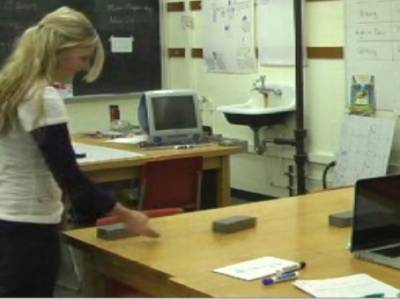You are here: start » days » fall2009daybyday » fall2009day15 » newton_slaws
Newton's Laws
Navigation Links
Fall 2009-Day 15
Force and Motion Activities
Inertia
Newton's Laws
| Newton's 1st Law | Newton's 2nd Law | Newton's 3rd Law |
|---|---|---|
| Emily explained that the bigger the force exerted on an object is, the bigger the acceleration will be. Also, if an object has a bigger mass, it has a slower acceleration, for the same force. To put this in to a formula, we can use Newton's 2nd Law: force=mass x acceleration. | If there is no acceleration, then there must be no force; therefore, an object with no acceleration either stays at rest or keeps moving with the same speed: Newton's 1st Law. | Newton's 3rd Law: for every action there is an equal and opposite reaction. We demonstrated this in class by using the two scales and pulling in opposite directions when they were attached. The same amount of Newton's (force) showed up on both of the scales. |

